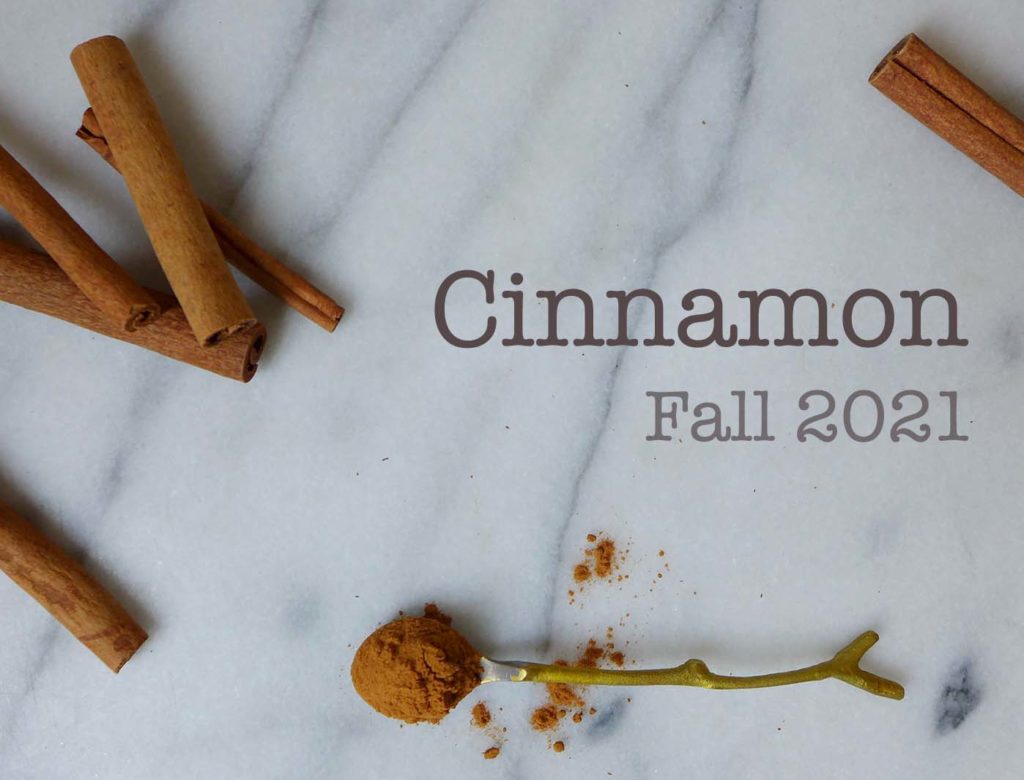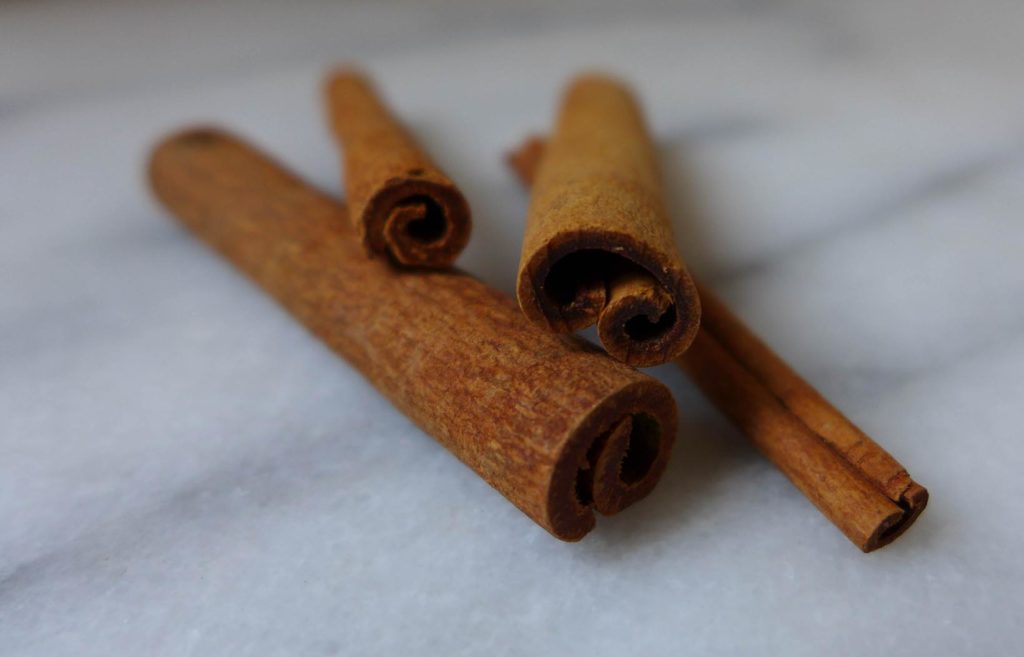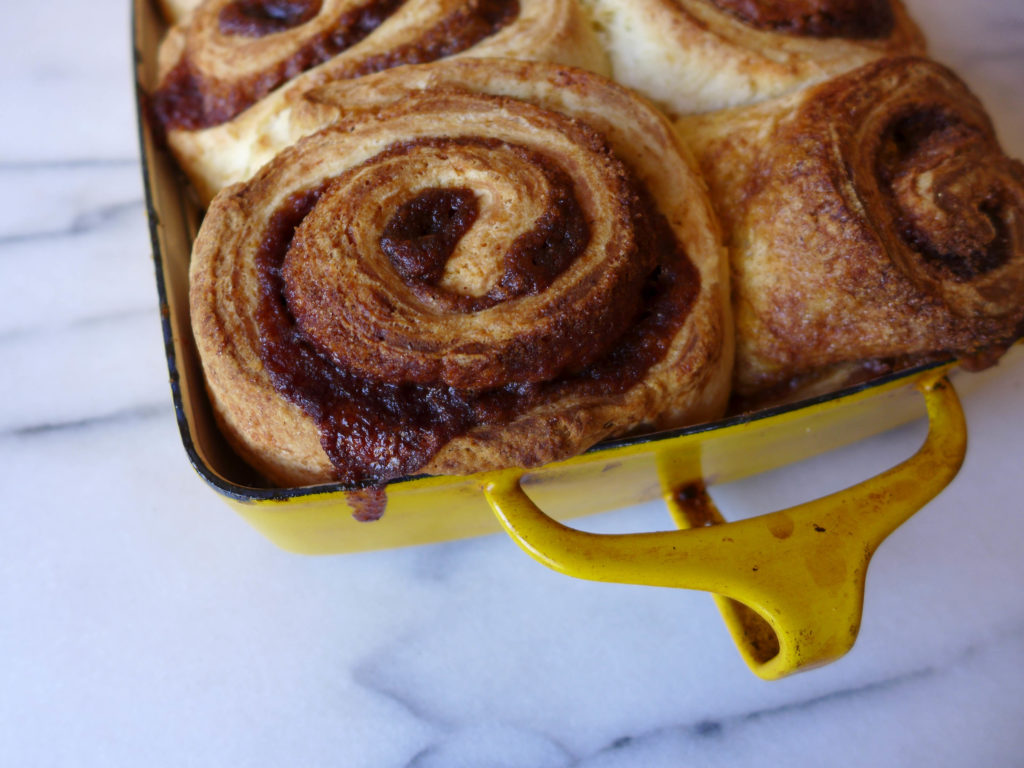You can find our archive of previous featured ingredients here.

You’ve read that right, after a 2 year hiatus, we’re back with a new featured ingredient. I’m really excited about some of the posts that we have planned for this season, and I can’t believe that we hadn’t highlighted cinnamon in all of its spicy glory sooner.
This is going to be a great season. Cinnamon is a spice that’s used throughout the world in both savory and sweet dishes, and we’re looking forward to exploring all of that variety. Of course, we’ll be sure to step out of the kitchen to use cinnamon in a number of different craft and beauty applications.
What is cinnamon?
Whether you buy it ground or as sticks, cinnamon is a spice that comes from the inner bark from trees in the Cinnamomun genus.
Cinnamon is harvested from young and tender stems. The outer, woody bark is removed. Then the shoots are pounded to loosen the inner bark which is then pealed off in layers. The strips of bark curl into quills while drying. The bark dries after a few hours, and at that point it can be cut into shorter lengths or ground.
Cinnamon gets its flavor from the essential oils contained with the bark. These essential oils can be extracted from both the plant’s bark and its leaves.

Cinnamon Varieties & Production
There are five common species of trees that are grown to produce the world’s cinnamon, and they each are endemic to a different region of Asia.
- Cassia is from China and is known for its strong flavor that holds up well during cooking.
- Korintje is from Indonesia
- Saigon or Vietnamese is from… Vietnam. It’s grown in the highlands of Vietnam, but was traded in Saigon, thus the name.
- Ceylon is from Sri Lanka and is considered to be a high quality cinnamon. It has a more delicate flavor than Cassia, and from my understanding, the high heat of cooking can cause it to lose flavor.
- Malabar is from India
Indonesia slightly outproduces China in share of global production, and I think that’s why I came across a number of contradictory reports about which has the highest sales in the US. Vietnam produces about half as much as China. Sri Lanka is at the bottom of the list producing half as much as Vietnam. Those four countries make up 99% of global production, and Malabar’s numbers are low enough that they don’t make the global sales chart.

History
Historically, cinnamon has been a valuable spice for thousands of years and was originally considered a gift for monarchs and gods. Cinnamon was transported along the famous spice route from Asia to the Mediterranean, but its exact location of production was kept secret.
The Greeks told tales of “cinnamon birds” collecting the sticks for trade. In the Middle Ages, it was believed that cinnamon was scooped out of the Nile in nets. It wasn’t until the 1200s that written reports of its production in Asia were known. Finally, by the 1500s European explorers reached the spice production regions of south east Asia and began to take control of the trade.
In ancient Egypt cinnamon was used to embalm mummies and burned as an incense.
Health & Medical Use
Cinnamon has be used in traditional medicine as a digestive aid, and is considered a warming spice in ayurvedic cooking.
A number of studies have looked at cinnamon’s ability to regulate glucose, which would be a useful aid for control diabetes. Unfortunately, studies have produced inconclusive results when looking at glucose regulation and either type 1 or type 2 diabetes.
Studies have also analyzed cinnamon’s ability to lower cholesterol, but again the results were inconclusive.
Some individuals have suffered gastrointestinal upset and allergic reactions from cinnamon consumption. And when consumed in high amounts, some cinnamon can cause liver and kidney damage due to the levels of coumarin present.
